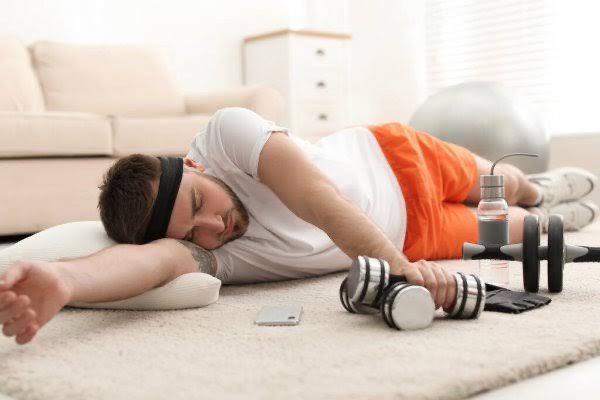
The best online fitness resource you'll ever need. We filter out the BS to ensure you meet your health and fitness goals!

The best online fitness resource you'll ever need. We filter out the BS to ensure you meet your health and fitness goals!

This is an odd question to answer. By themselves, most behaviors won’t de facto decrease fitness (though laziness on any given day will impact performance). However, there are certain behavioral patterns that can severely, negatively impact fitness, and they are well worth looking into.
If you recognize any of them in yourself, it may well be holding your own athletic development back.
Very few people are prohibited from taking part in the World Health Organisation’s suggested lower limit for activity levels.
It may be hard to get access to a gym for some people. It may be hard to gain an insight into any kind of specialized athletic endeavor, especially for those with more limited means.
Except in the case of severe physical impairment, however, we can all fit in half an hour of walking per day.
Yet around 60% of men, 70% of women, 30% of boys and 40% of girls fall short of this lower limit. This matters a great deal. Physical inactivity is one of the leading causes of premature mortality in the developed world.
Increasing activity levels would go a long way to preventing a great many chronic diseases and health issues. It would also save society as a whole a great deal of money, with a lack of physical fitness in the larger population costing Britain alone around £27 billion per annum.
In Britain, a quarter of adults are classified as obese, with over 60% being above a healthy weight range.

Given access to the baseline of physical fitness that we all have, if we wanted it, it is apparent that a large reason behind this lack of activity and the inherent health risks that come with it are in part behavioural.
But what are these behaviors? What is it that stops people from being fit?
It is very important to understand why people don’t take part in a suitable, foundational level of physical activity.
There are plenty of reasons people neglect their fitness. Many people blame a lack of time or energy, whilst others simply lack motivation or enjoyment from exercise.
These sources are generally internal – a perceived lack of time or energy, in most cases (with, of course, some exceptions), alongside a simple lack of desire to exercise.
There is also an educational element – not everybody has access to the statistic I’m using for this article, nor does everyone have a clear understanding of what exercise is, or how or why they should be taking part in it.
Internal changes, in part, will be responsible for changing them. As will education.
I will leave education to the side for now. If you’re reading this article, you likely already know a bit about fitness, or are in the process of finding it out. Read, read, read – check out our back catalogue of articles as often as possible. Knowledge is power.
Aside from this, I need not tackle education.
I want to first tackle those internal aspects that can scupper exercise plans in even the best of us (I’m a professional trainer and I struggle not to succumb to them from time to time!)
There are a couple of different theories on why people don’t take part in, or don’t adhere to, an exercise regime.
First, we have the Social Cognitive Theory. This states that exercise behaviour is influenced by personal, behavioural and environmental factors.
Higher levels of self-efficacy (the belief in one’s capabilities to organize and execute the courses of action required to manage prospective situations) tend to lead to higher exercise participation, especially where participation is challenging.
A lack of self-efficacy can be seen as a lead reason behind failure to commit to an exercise plan.

Then we have the theory of Planned Behaviour. This states that exercise behaviour consists of a mixture of intentions, subjective norms, attitudes, and perceptions of ability to control behaviour.
Basically, a positive mindset towards training will lead to higher effort levels, less perceived difficulty and, ultimately, greater adherence in any athletic endeavor.
The importance of self-belief and positive thinking cannot be overstated in shaping our exercise behaviour.
Then we have a whole list of negative behaviours that can diminish anybody’s likelihood of maintaining an active lifestyle.
There are, of course, personal factors at work as well. These include demographics such as education, income and various socioeconomic factors, which can all make it easier or harder to maintain an active lifestyle.
Though there is little that can be done about many of these factors, they are worth bearing in mind if you come from a socioeconomically disadvantaged background or have a lower level of formal education.
They can be mitigated in part by your own personality – how motivated you manage to be about taking part in regular exercise.
Behavioural factors also apply. A previous history of physical activity is generally linked to likeliness of current participation.
So, if you develop healthy habits now, you will be likelier to keep them up long term. If you have children, getting them active young will increase their chances of remaining so.
Environment is a big deal, too. Support from loved ones and those around you is also linked to participation in physical activity.
Try to surround yourself with positive people who will support you. Tell your family and your spouse that you need encouragement. This will all help to keep you motivated.
This applies to fitness professionals, too. Get yourself into a positive gym or sports club. Go to classes led by positive coaches. Their knowledge and enthusiasm will do a lot of the work for you, very much encouraging you to push yourself harder and stick with it.
Variety can mean a lot to many people. Don’t let yourself get bored. Switch up your training every so often, or even engage in a different activity every day of the week. Lift weights three times.
Practice yoga twice. Go to an aerobics class. Walk on your rest days. There are plenty of opportunities – use them to keep yourself engaged.
Location is important, too. If you live in a crowded city with no gyms or parks, you will be unlikely to exercise too often.
The opportunities simply won’t be there. If you live near a gym, or in a rural location with access to nature, you will have far more opportunities to become and remain active.
This will, of course, especially be the case in the warmer summer months, when it is more pleasant to be out and about, and willpower will be strongest.
Manage these, gearing your behavior towards success and your environment towards support, and you will stand a far higher chance of maintaining your fitness.
Don’t do it – allow negative behaviors to encroach – and you will find it a lot harder to live a fit, active lifestyle.